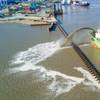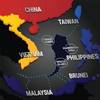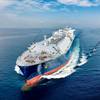Fitch Bullish on Asia-Pacific Ports
Revenue stability and capex plans are the main drivers of credit rating differences among Asia-Pacific ports, according to a new Fitch Ratings report. Leverage and debt structure also set apart the ratings.
Revenue stability, due to strong volume or price attributes, and resilience is underpinned by each port's importance to the economy and the strength of its catchment area, along with its competitive position.
Volume stability benefits from diverse throughput and limited customer concentration; reliance on a single commodity can increase volatility. Fitch assesses the price attributes as mid-range or stronger for the Asia-Pacific ports. This is driven by higher tariff-setting flexibility for some ports, and long-term lease or take-or-pay contracts for others.
Leverage levels range from 2.2x to 9.4x, supporting standalone credit profiles in the 'BB' or 'BBB' categories. Some ports' high leverage levels are justified by stronger volumes or price-risk assessments.
Debt structures are diverse among Asia-Pacific ports. Some ports have more corporate-like debt, with limited covenants and some exposure to increased leverage. Others, including the Australian coal ports, utilise secured debt with typical project-finance covenants and reserve accounts. Bullet debt maturities present refinancing risk, particularly for those ports with concentrated commodity exposure.
Ratings for certain government-owned ports receive support from the sovereign. However, standalone credit profiles for some ports may also be constrained by the Country Ceiling.










